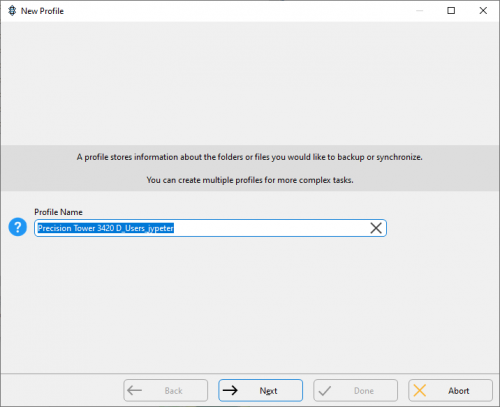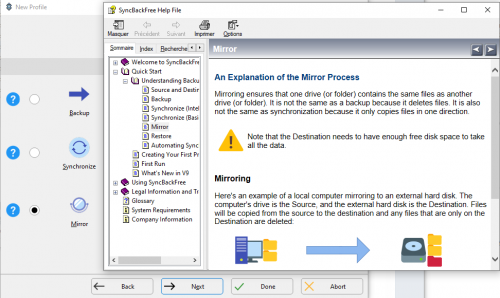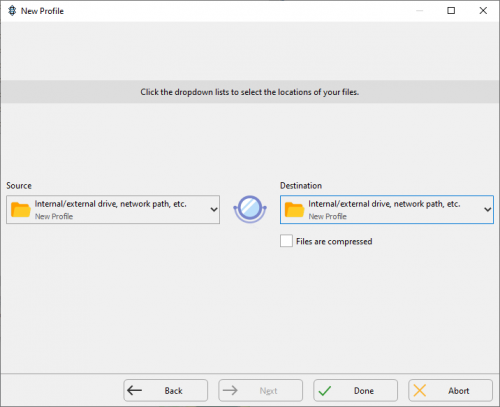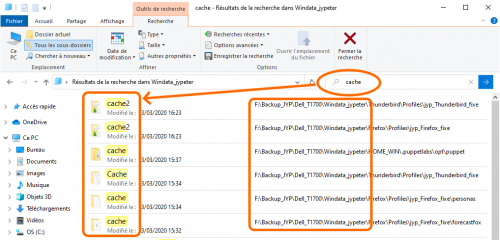Table of Contents
Using SyncBack
What is SyncBack?
SyncBack is one of the many backup programs available for Microsoft Windows.
You can use the SyncBack family of products to backup, synchronize, and restore data files.
The SyncBackFree version should be enough for easily mirroring directories, or groups of directories to an external disk, but you can compare the features available in SyncBackPro, SyncBackSE and SyncBackFree: summary comparison and full comparison. You can always upgrade later, when you receive a code for buying SyncBackSE (or Pro).
Installing SyncBack
- Install SyncBackFree. At the end of the installation process, you may want to subscribe to the mailing list (you will receive from time to time codes to upgrade to another version of Syncback at a reduced price)
Configuring a mirror backup
We want to do a mirroring backup:
- Copy all the files from the source folder to the destination folder, so that the destination folder is an exact copy of the source folder. All the files are copied on the first run, and only the new/changed files are copied on subsequent runs. The subsequent mirror operations are then significantly faster, which should motivate you to make frequent backups.
- Warning! if a file is not on the source anymore, mirroring will automatically delete it from the destination! Never forget that the destination should be an exact copy of the source! This also means that if you delete a file by mistake, you have to retrieve it from the backup before the next mirror operation removes the file from the mirror! If that's not what you want, use the backup (rather than mirror) options.
Do not be frightened by the step by step configuration and the many screenshots below (click on a screenshot if you need a bigger version)! There are lots of available options in the SyncBack point-and-click interface, and it is easier to use images to explain what needs to be done.
- Connect a USB disk/stick with enough free space to your computer, and prepare it for the backup
- You should create a clean directory hierarchy on the backup disk, matching the folders that you intend to backup. You may want to backup several computers to the same USB device, and you should therefore also use the name/type of the source computer in the destination folders
- In this example, we are going to mirror the content of
D:\Users\jypeter
toF:\Backup_JYP\Dell_Precision_3420\D_Users_jypeter
- Launch SyncBackFree. You can find it in
Start→#→2BrighSparks→SyncBackFree - A new Profile Setup window opens, where you can specify the Source and the Destination folders.
In this example, we use Source =D:\Users\jypeter
and Destination =F:\Backup_JYP\Dell_Precision_3420\D_Users_jypeter.
Once you have filled both fields, a summary of what will be done is displayed in the Description of this profile section. You can click on Change Filter for a more precise control of what will be saved (this is optional, and can be adjusted later!), or on OK when you are done
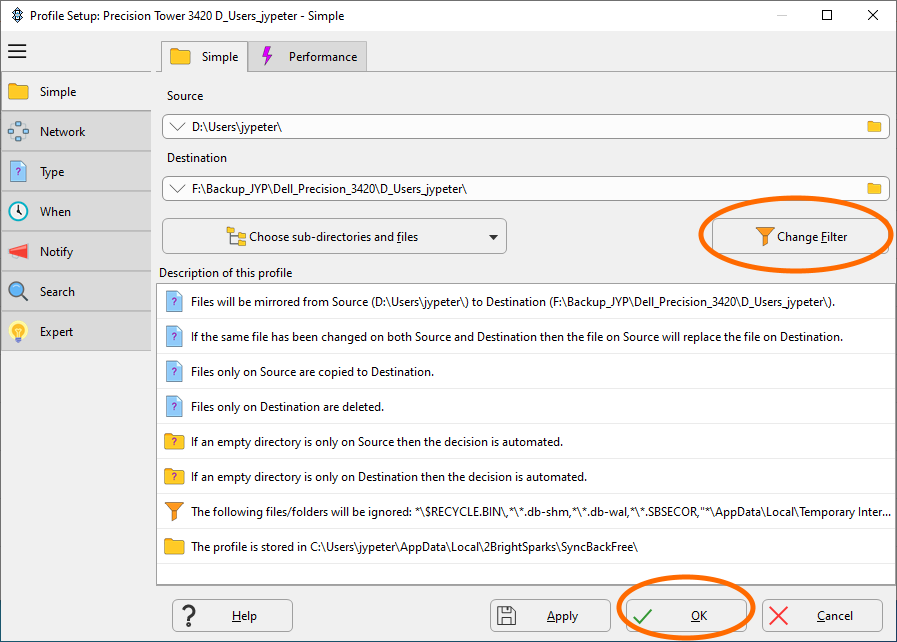
- If you choose to review and update the filters, with the Change filter button, you will get two new windows: the File & Folder selection window that you can ignore, and the Filters window
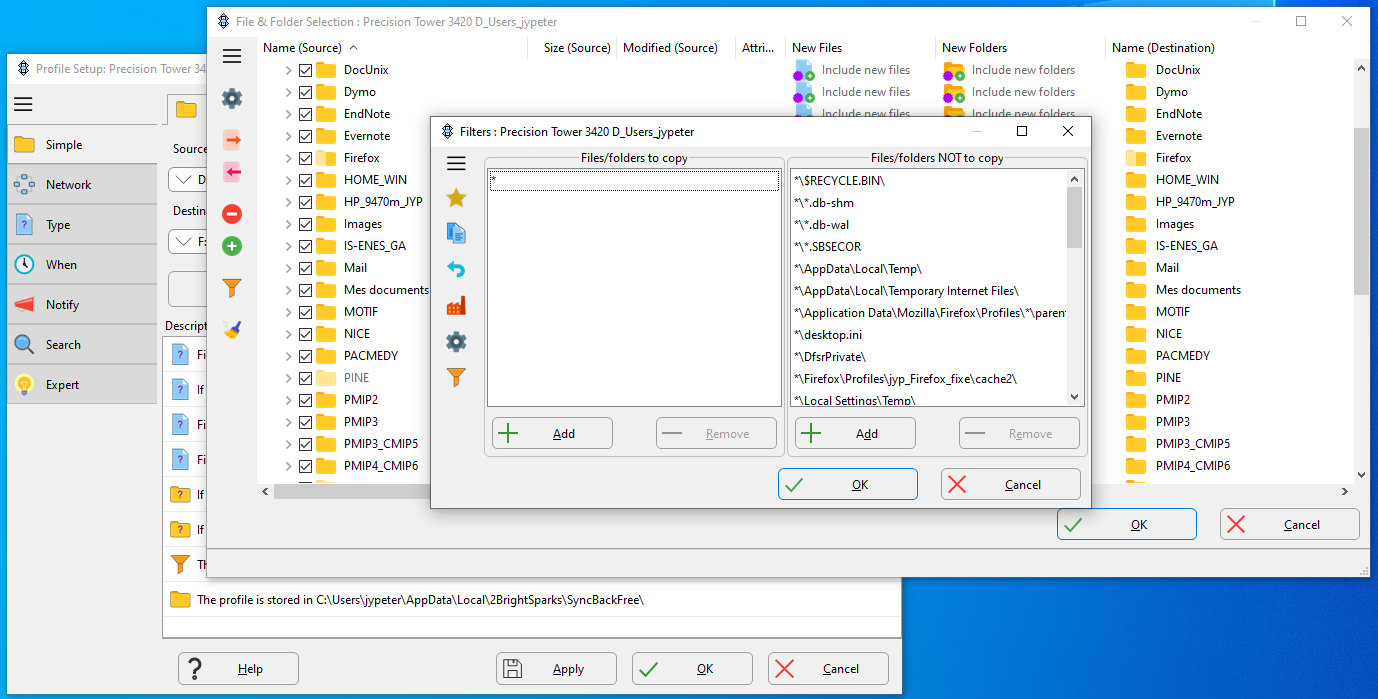
You can use the Add button below the Files/folders NOT to copy window to add new filter rules to the list of files/folders that should be ignored by SyncBack. Check the Filters section below for more details about the filters.
Note: double-click on an existing filter if you want to change it !

- When you have finished adjusting the filters, or if you have directly clicked on OK after specifying the Source and the Destination folders, you will get a popup window asking if you want to do a simulated run. You can skip this step, as it will automatically be done by default each time you execute this profile

- You are now ready to execute the backup profile! You can either click on the main Run button to launch an attended run, or use the other available options
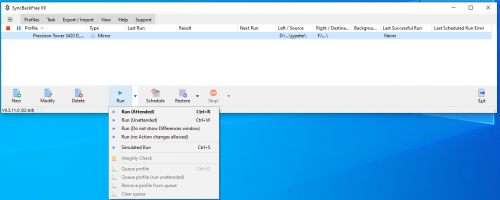
The Attended Run (and the Simulated Run) will display a window with the list of planned backup operations. You should check carefully the content of the Differences window when executing a profile the first few times, especially the files/folders outlined in red in the right part (the files that will be overwritten or removed). If you see lots of files with random names (screenshot below), they are probably in a cache directory that you can remove from the backup by using a filter.
As you can see in the bottom right part of the screenshot below, there are lots of files (7k) to copy because it's a first run, with no expected Collisions (when a file in Source is more recent than the matching one in Destination), or files To Delete (when a file in Source has been removed, and the matching one in Destination will be deleted). The next runs will be faster (less files to copy), but you may want to keep an eye on the list of files to be deleted…
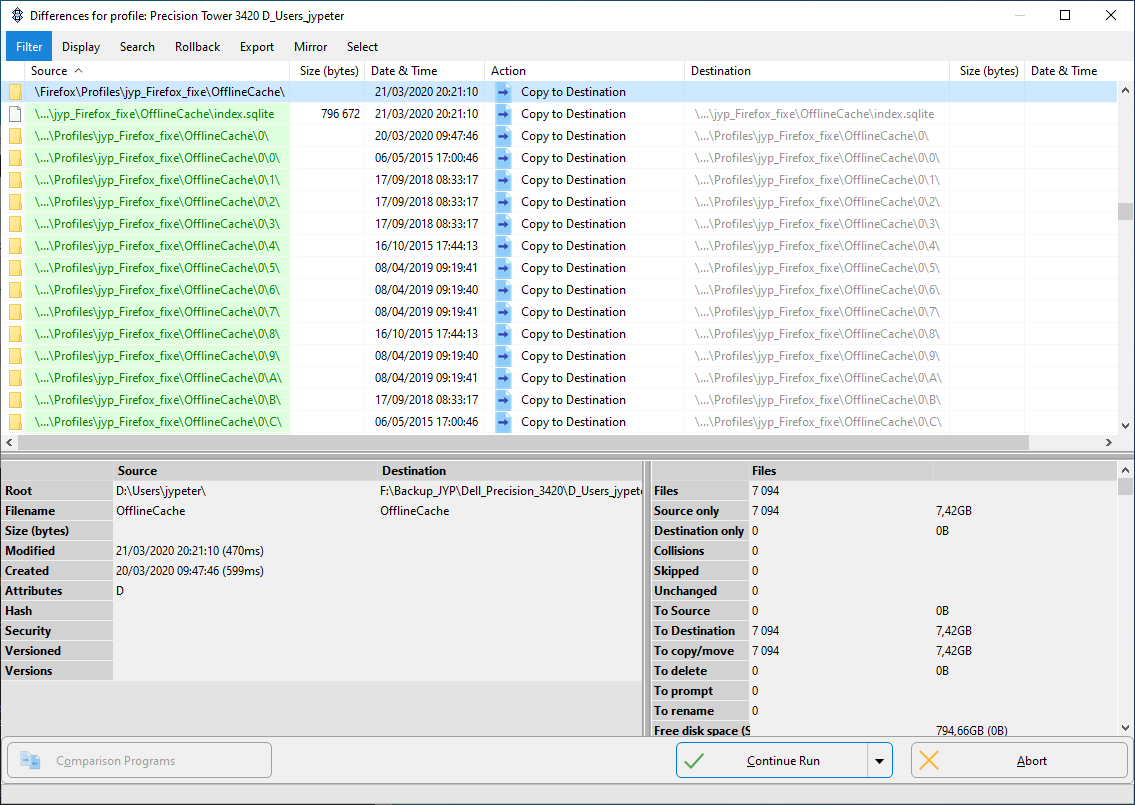
- After executing the profile, you will get a popup window (that you can disable after a few runs) telling you if there were some problems (e.g. a file was locked by the system and could not be accesses), and then a summary log will open in your browser. You can click on the Errors link, or the other links to get details about what happened.
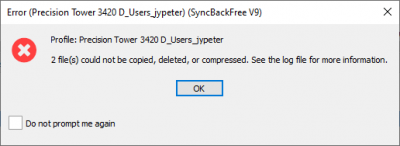
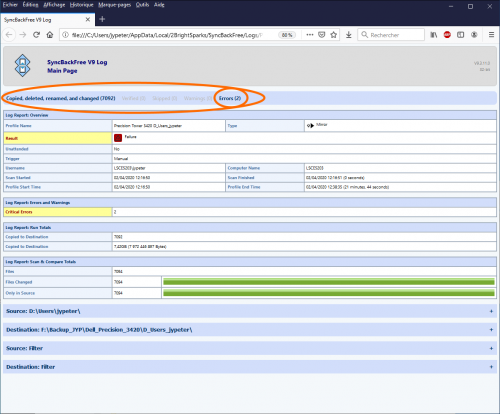
Using Filters
You can use filters to disable some of what SyncBack would try to backup otherwise:
- Not backing up useless files/folders (e.g lots of temporary files with random names in cache folders) will make SyncBack run faster (and save space on the backup device)
- Some files/folders can't be backed up because their access is protected by the system (possibly because they are still open) and will generate errors in the log file. Skipping them will make it easier to spot real errors
- In order to make a correct backup of everything, it is always better to close the running applications (if possible) before starting the backup
Notes:
- The filters are paths relative to the Source folder
- A filter must start with
\string(stringwill be searched in the root of the Source folder) or*\string(there can be sub-folders between the Source folder andstring) - A folder name must have a trailing slash (
*\some_text_file.txtvs\a_subfolder_somewhere\) - To modify an existing filter double-click on it in the filters' list
- you can use uppercase and lowercase in windows files and folders' names, but the filters will ignore the case of the characters (e.g. the
*\mixed_case.txtfilter would skipmixed_case.txt,Mixed_Case.txt,mixed_CASE.txt, …)
Suggested filters when backing up your custom Home folder
Custom Home folder means here ANOTHER_DISK_THAN_C:\Users\your_login, assuming that you have followed the instructions in Configuring folders to create a Home folder distinct from your default Windows home folder on C:\…
Note: we assume in the filters below that the Thunderbird and Firefox profiles were moved from their default location on C:\, to the Home folder
- Remove Thunderbird and Firefox lock file:
*\parent.lock - Try to remove all the obvious cache folders:
*\*cache*\- The filter rules above will remove cache folders like:
*\Firefox\Profiles\jyp_Firefox_fixe\cache2\,
*\Thunderbird\Profiles\jyp_Thunderbird_fixe\Cache\,
*\Thunderbird\Profiles\jyp_Thunderbird_fixe\cache2\
… and many similar folders
- Remove other Thunderbird and Firefox folders with temporary files:
*\storage\,*\datareporting\
Suggested filters when backing up your Windows Home folder
Default Windows Home folder: C:\Users\your_login
- Try to remove all the obvious cache folders:
*\*cache*\
This should take care of cache folders like:*\AppData\Local\Google\Chrome\User Data\Default\*Cache\
- Google Chrome related cleaning:
*\Google\Chrome\User Data\CertificateRevocation\
*\Google\Chrome\User Data\SafetyTips\
*\Google\Chrome\User Data\Default\File System\
*\Google\Chrome\User Data\Default\IndexedDB\ - Remove WSL+Linux from backup:
*\AppData\Local\Packages\Canonical*Ubuntu*\- It's probably better to use wsl export/import for saving/restoring a full WSL installation, or a tar file for saving only the Linux
homedirectory - Remember that WSL+Linux can access Windows folders using
/mnt/some_drive/some_directory.
You can put your data files insome_drive:\some_folderand use SyncBack to save the content of this regular Windows folder!
- Remove the backup of all the settings saved in
AppData\Local\Packages:*\AppData\Local\Packages\ - Remove some Microsoft apps related directories:
*\AppData\Local\Microsoft*\ - Remove some apps directories that use too much space:
*\AppData\Local\WebEx\
*\AppData\Local\GoToMeeting\ - Remove Windows links to Recent Files:
*\AppData\Roaming\Microsoft\Windows\Recent\ - Remove misc. files:
*\ntuser*,*\NTUSER*,*\AppData\Local\Google\Chrome\User Data\Default\Current* - Remove misc. directories:
*\AppData\Local\Comms\,*\AppData\Roaming\Adobe\
The side effect of filters
If you use a filter to specify that something in the Source folder should not be backed up to the Destination folder, SyncBack will also ignore it in the Destination folder, and it will stay in Destination forever (if it is already there), unless you remove it by hand!
If you have time, you may want to review the custom filters you have added, and remove the filtered folders/files in Destination by hand…
Detailed example
- you execute a backup profile, and one of the mirrored folders (in Source) is called
datareporting
⇒datareportingexists in both Source and Destination after the mirror backup - you add a
*\datareporting\filter that will skip thedatareportingfolders the next times you execute the backup profile
⇒datareportingstill exists in both Source and Destination- The
datareportingcontent in Source may change but will be ignored by SyncBack (that's what you want!) - The
datareportingcontent in Destination will stay there and never will change (the side effect… because you don't want to have something in Destination that does not exist in Source, after a mirror backup)
- The only way to get rid of
datareportingin Destination is to remove it by hand
Finding and cleaning filtered items
The easiest way to clean the Destination folder is to open it with the file explorer and use the Search field. The screenshot below shows what you get when you look for cache. You can then select all the cache folders and remove them (in this case, there were 12k files using 400+ Mb in the deleted folders).


